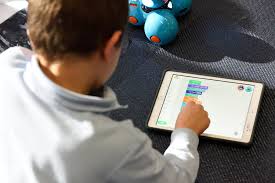How do you help a child struggling to learn to read?
How to Help a Child Struggling With Reading
- Don’t wait to get your child reading help she’s behind.
- Try to read to your child for a few minutes daily.
- Help your child choose books at her reading level.
- Consider checking out books on tape.
- Create a reader-friendly home by monitoring screen-time.
How do you make reading fun for struggling readers?
13 Ways To Make Reading Fun For Your Child
- Pick the right books.
- Read aloud.
- Act out the story.
- Encourage all forms of reading.
- Choose books about his or her interests.
- Create a reading space.
- Make connections between books and life.
- Let your child choose.
What is a fun reading game? Bingo games give kids a fun way to practice reading a variety of words, from easy to difficult. Sight Word Bingo. Magic E Bingo. Rhyming Bingo.
How can I help my child with poor reading skills?
12 Strategies To Help Struggling Readers Improve Reading Comprehension
- Find books they’ll like.
- Read aloud.
- Skim the headings of the text.
- Re-read sections that are confusing.
- Use a ruler or finger to follow along.
- Write down words you don’t know.
- Discuss what your child has just read.
- Recap and summarize the main points.
How do you help a child struggling to learn to read? – Additional Questions
Why is my 6 year old not reading?
The most common indicator that a child will struggle with reading is whether they have a family history of reading or learning issues, or dyslexia, says Truch. “We do know from research in the last 20 years that there’s a heavy genetic component to reading difficulties,” he says.
What are the 4 types of reading difficulties?
Types of Reading Disorders
- Word decoding. People who have difficulty sounding out written words struggle to match letters to their proper sounds.
- Fluency. People who lack fluency have difficulty reading quickly, accurately, and with proper expression (if reading aloud).
- Poor reading comprehension.
What are the major causes of poor reading ability?
Some major causes of poor reading ability are difficult text, ADHD, dyslexia, limited vocabulary, working memory deficit, and more. People may also have trouble with comprehension due to boredom or disinterest in what they are reading.
Can struggling readers catch up?
The longer you wait to get help for a child with reading difficulties, the harder it will be for the child to catch up. The three key research conclusions that support seeking help early are: 90 percent of children with reading difficulties will achieve grade level in reading if they receive help by the first grade.
At what age should a child read fluently?
Reading fluency occurs when a child has developed the knowledge and skills to recognize words automatically, accurately, and quickly. This usually develops at ages 7 to 8. For a child who can read fluently, their brain is able to perform multiple tasks at the same time.
What are the activities for developing reading skills?
Here are some practical ideas you can incorporate into the classroom to help your students become independent readers.
- Display letters and words around the classroom.
- Create word families.
- Play decoding games.
- Teach phonemic awareness.
- Play ‘fish’ with sight words.
- Word search bingo.
What are five pre reading activities?
10 Pre Reading Skills Activities for Preschoolers
- Read to Children Every Day. It’s never too early to start reading to your children.
- Ask Questions While Reading.
- Point Out Print in the Environment.
- Learn the Letters.
- Learn Rhymes and Poems.
- Play Rhyming Games.
- Develop Listening Skills.
- Hear Sounds in Words.
What are the 6 basic reading skills?
Here are six essential skills needed for reading comprehension , and tips on what can help kids improve this skill.
- Decoding. Decoding is a vital step in the reading process.
- Fluency.
- Vocabulary.
- Sentence construction and cohesion.
- Reasoning and background knowledge.
- Working memory and attention.
What are the 3 main types of reading strategies?
There are three different styles of reading academic texts: skimming, scanning, and in-depth reading. Each is used for a specific purpose.
What are the 4 types of reading strategies?
4 Different Types of Reading Techniques
- Skimming. Skimming, sometimes referred to as gist reading, means going through the text to grasp the main idea.
- Scanning. Here, the reader quickly scuttles across sentences to get to a particular piece of information.
- Intensive Reading.
- Extensive reading.
What are the four methods of teaching reading?
Selecting the appropriate method
- Phonics approach. The phonics approach teaches word recognition through learning grapheme-phoneme (letter-sound) associations.
- Linguistic method.
- Multisensory approach.
- Neurological Impress Technique.
- Language experience approach.
- Reading comprehension support.
What is the most effective way to teach reading?
Reading aloud is considered the best way for caregivers to prepare a child to learn to read. The panel’s analysis showed that the best approaches to reading instruction have the following elements: Explicit instruction in phonemic awareness. Systematic phonics instruction.
What are the 5 reading techniques?
The best reading techniques are the SQ3R technique, skimming, scanning, active reading, detailed reading, and structure-proposition-evaluation.
How can I teach my child to read without phonics?
Common alternatives to phonics include:
- Whole Word / Look and Say / Flash Cards.
- Whole Language.
- Native / Natural Reading.
- A Combination of These Methods.
Can a child learn to read without being taught?
A very small number of fortunate children are able to make the connections on their own, without explicit teaching. When children begin school, we cannot predict with sufficient accuracy which children will struggle to learn to read without explicit, systematic phonics instruction and which will not.
Why is phonics not good?
The “Drill and Skill” in Phonics Puts Kids Off Reading. Most Children Don’t Need Phonics Instruction. Phonics is no Use Because There Are Too Many Irregular Words in English. One size doesn’t fit all / children have different learning styles.
Why is it that some students do not learn to read?
Children may struggle with reading for a variety of reasons, including limited experience with books, speech and hearing problems, and poor phonemic awareness.




